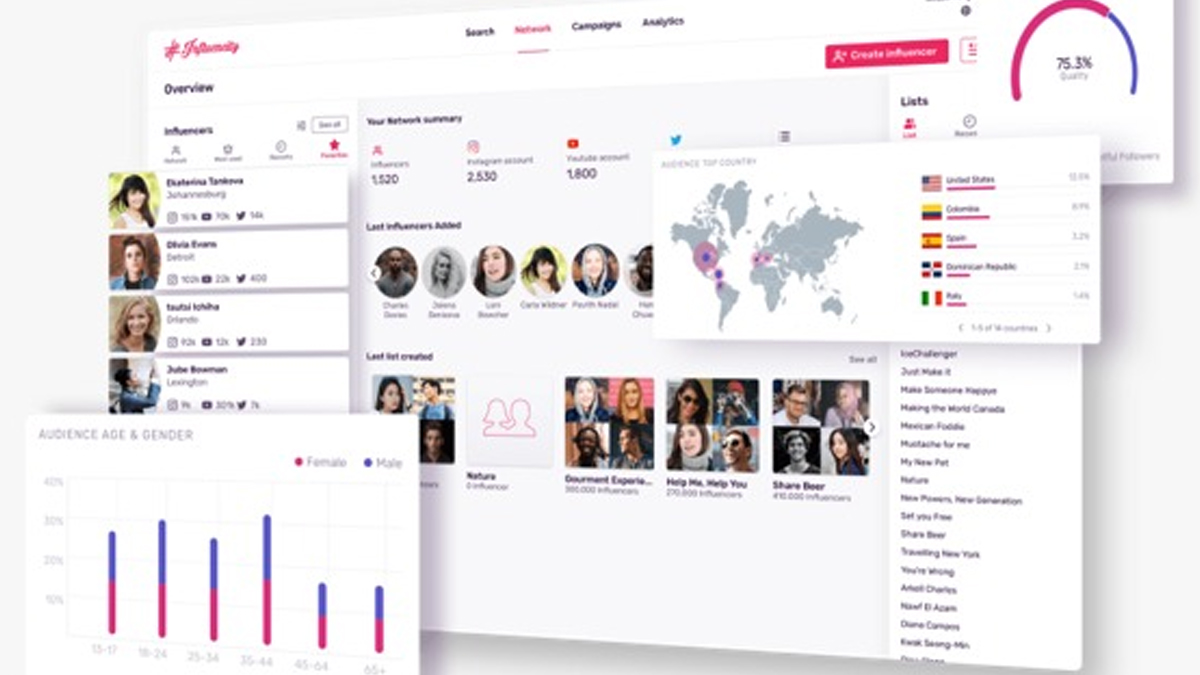In this day and age of technology it is now possible to see influencer marketing rise to the top of the list as a viable strategy for brands looking to engage with their customers in genuine and engaging ways. The integration of an influencer marketing plan, the key performance indicators (KPIs), and the return on investment (ROI) provides the crucial element to unlock its full potential. This article explores the complexities of influencer marketing, and examines the ways in which a coordinated strategy can yield amazing results.
Marketing Influencers: How to come up with a strategy that is effective
The key to a successful campaign with an influencer is a carefully crafted strategy. Not only should you connect your brand to influential people who are famous and well-known, but also with people with the capacity to effectively share your message. Influencer marketing encompasses:
Identifying Objectives: Clearly define what you’re trying to achieve through influencer collaborations. Are you seeking to boost brand recognition, drive sales, or establish an image of thought leadership? Each goal requires a specific strategy.

Influencer Selection: Take care to select influencers whose values align with your brand’s mission. For instance for example, a fitness-focused influencer may not be the best one for a clothing brand that is focused on luxury.
Content Alignment: Work with influencers to create content that represents the authentic voice of influencers while integrating your brand’s messaging.
Distribution Plan: Determine the method and location where content will be shared. This can include social media platforms, blogs and even in-person events.
Measuring the effectiveness of marketing influencers with KPIs
KPIs are an excellent way to track the success of an influencer campaign. KPIs are metrics that can be used to quantify the impact of your campaign. provide insight into the performance of your marketing campaign. KPIs differ based on the purpose of the campaign, however, some of the most common include:
Engagement Rate: This measure determines the amount of interaction the content of an influencer is received by their followers. This is comprised of comments, likes and shares as well as clicks.
Follower growth: The rise in the amount of followers on your company can provide an accurate indication of how well it resonates with your audience. For more information, click influencer marketing kpi
Click-Through (CTR) Rate The CTR rate is the percentages of users that follow links from influencers in order to gain more information about your product or service.
Conversion Rate The conversion rate shows the number of people who are influenced by an influencer’s message actually perform a desired action. For instance, making a purchase or signing up to the newsletter.
Unveiling the true impact of the ROI for influencer marketing
Knowing the ROI is crucial for brands investing in influencer marketing. ROI quantifies your investment’s value relative to its expense. Calculating influencer marketing ROI involves taking into account both tangible and intangible variables:
This is a direct result that can be measured such as the volume of sales made as well as the number of new customers gaining as well as the growth in traffic on the website.
These are significant, but harder to measure. They cover factors such as greater brand awareness, improved perception of the brand and improved customer trust.
Calculating ROI: The formula used to calculate ROI is (Net Profit (Net Profit) / Cost of Investment) 100. Remember that a positive return on investment does not necessarily translate into immediate financial benefits. Positive intangibles can have a major impact on the effectiveness of your campaign.
Understanding Lifetime Value: To fully understand the value of an influencer’s marketing campaign, take into consideration the long-term value of acquiring customers. The impact of an influencer’s marketing campaign may last beyond the initial phase if their content leads to customers making frequent purchases.
Influencer marketing is multi-faceted and requires a carefully planned strategy. The effectiveness of such campaigns is based on the synergy of the influencer marketing strategy KPIs, ROI, and evaluation. An established influencer marketing plan that is in line with your brand’s objectives and values forms the foundation of successful partnerships. With the right KPIs you can gauge the success of your campaign, providing you insights into its reach.
As for ROI the calculation goes beyond just numbers, and covers tangible and intangible rewards. It’s about understanding the holistic effect of influencer advertising on brand perception, customer trust and the potential for long-term growth. By combining all of these factors, brands are able to unlock the full potential of influencer marketing campaigns and create lasting relationships with their customers. The synergy between strategy, ROI, and KPIs fuels the evolution of influencer marketing as a concept into a lasting marketing approach.